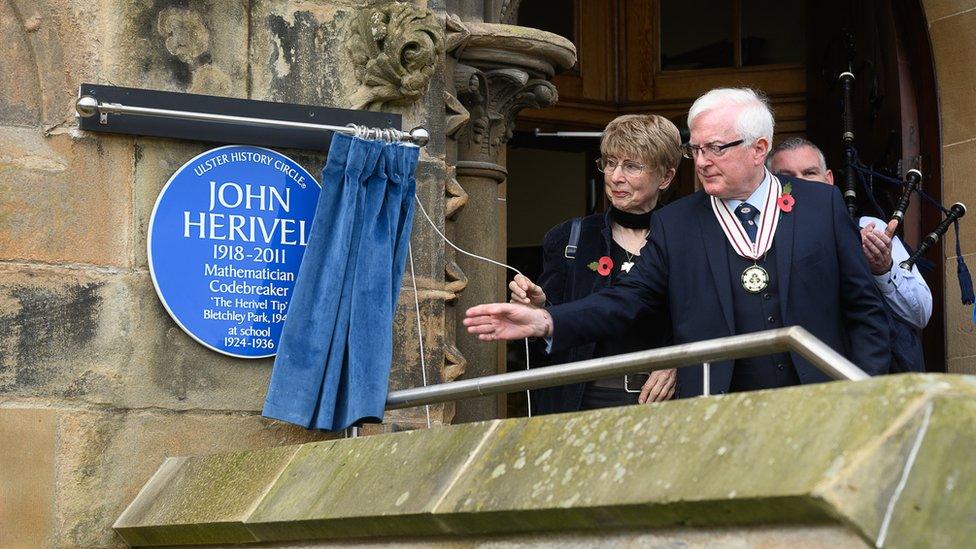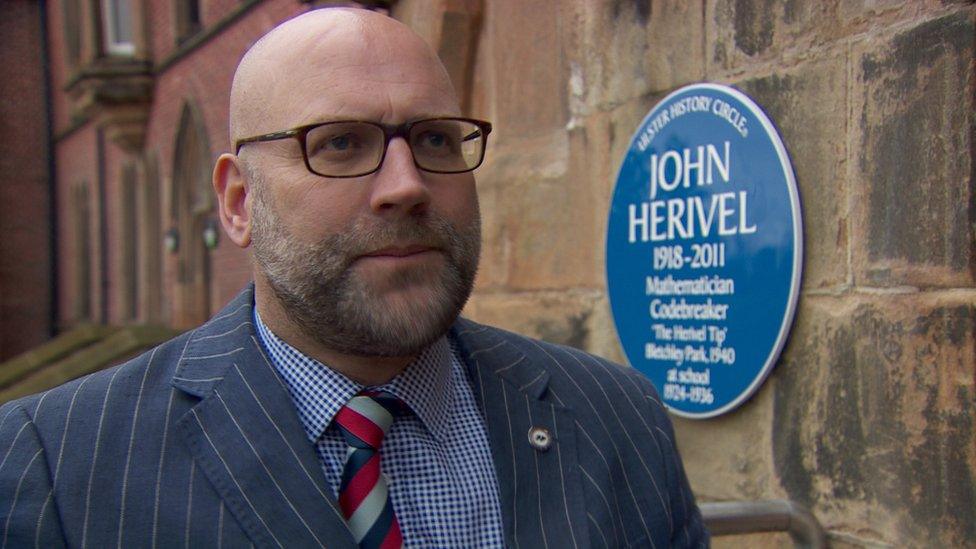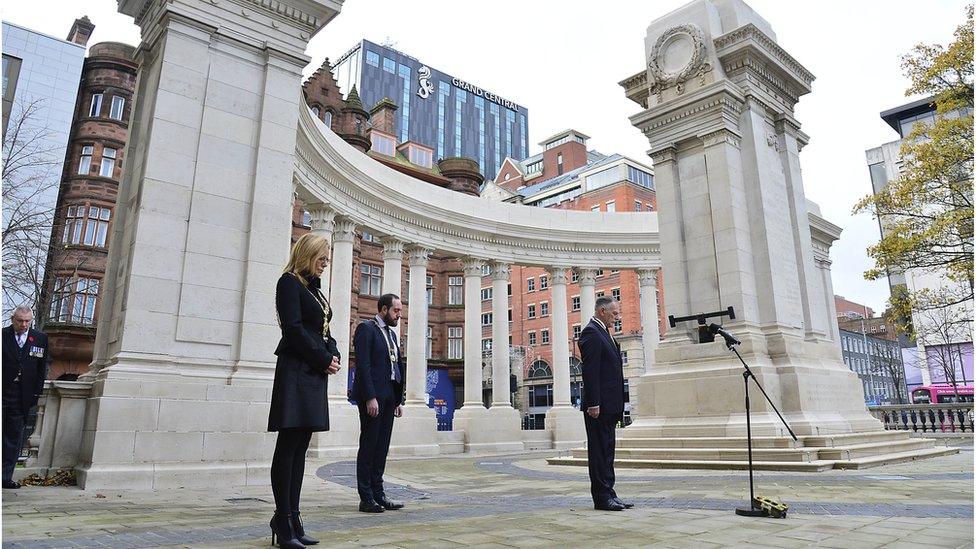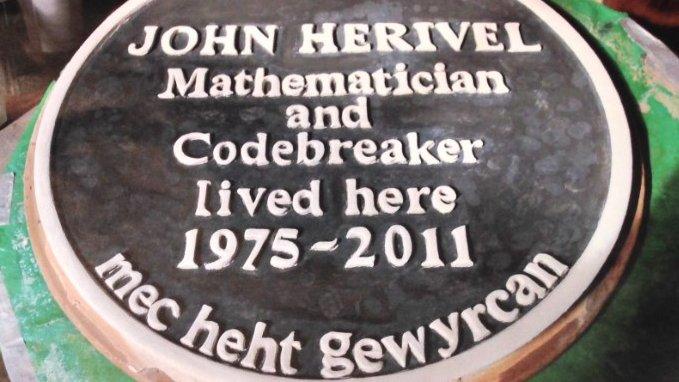World War Two: Plaque unveiled for codebreaker John Herivel
- Published
John Herivel helped to break the Engima code messages at Bletchley Park
A blue plaque to honour a World War Two codebreaker has been unveiled at Methodist College Belfast.
John Herivel, a former pupil at the school, played a key role in efforts to decrypt Germany's Enigma codes.
The work at Bletchley Park helped to decipher key intelligence messages to inform the Allies' war planning.
The unveiling of the plaque took place as Armistice Day commemorations were held across Northern Ireland, including at the Cenotaph in Belfast.
Veterans, dignitaries and members of the public observed a two-minute silence at 11:00 GMT.
Mr Herivel's system for breaking the ciphers in 1940 became known as the Herivel Tip or Herivelismus.
The work at Bletchley Park was kept secret for decades but an official history of British intelligence in the war would later state it had shortened the conflict by between two and four years and without it the outcome would have been uncertain.

Susan Algie Herivel unveiled the plaque for her father at his former school Methodist College
Mr Herivel died at the age of 92 in 2011.
The Ulster History Circle plaque for Mr Herivel was unveiled by his daughter Susan Algie Herivel on Friday.
She told BBC News NI's Evening Extra programme that her father would have been pleased by the recognition.
The Herivel Tip was based on an assumption that German code operators would fail to change some Enigma settings at the start of their shift.
Ms Algie Herivel said the idea came to her father when he was half-asleep.
"It was at the beginning of the time at Bletchley Park and he was in digs in the town and the landlady gave him the sitting room after dinner," she said.
"He would sit with his feet up, I think there was a fire, and on one particular evening he went into a strange half-asleep, half-awake [state].

Dr David Abrutat attended the plaque unveiling ceremony on behalf of GCHQ
"He had an idea of a German wireless operator who at the beginning of some major offensive would be starting to cut corners and not sticking to the rules entirely.
"He gave the idea back to his boss Gordon Welchman but everybody thought it was unlikely to happen.
"But the thing is it did happen and that's when so many messages came in."
'It was a team sport'
Mr Welchman later wrote that without the idea the Allies "would have been defeated in May 1940".
Dr David Abrutat, a historian at the intelligence agency GCHQ, said Mr Herivel and the other codebreakers at Bletchley Park were under "extreme pressure".
"In May 1940 [the Herivel Tip] worked and they cracked the code," he said.
"It provided real strategic advantage for the allied forces in occupied Europe."
While Alan Turing is the highest profile among the code breakers, Dr Abrutat said the effort across Bletchley Park was a "team sport".
"It wasn't just one individual changing the world," he said.

A silence was held at war memorials across Northern Ireland to mark Armistice Day on Friday
The Ulster History Circle chairman Chris Spurr said Mr Herivel was an insightful mathematician who discovered a way of breaking the Enigma code by hand.
"His ability in maths was encouraged at Methodist College, and the Ulster History Circle is delighted to commemorate this mathematician and codebreaker with a blue plaque," he said.
Mr Herivel attended the school between 1924 and 1936 and lived at Malone Avenue in the city.
After leaving school he won a scholarship to study maths at Cambridge University.
The Ulster History Circle said Mr Herivel received special praise from Sir Winston Churchill during a visit the then-prime minister made to Bletchley Park during the war.
After World War Two Mr Herivel returned to Northern Ireland and took up positions at Campbell College and Queen's University before moving to Oxford.
His daughter was also present when an unofficial commemorative plaque was installed at her father's Lonsdale Road house in Oxford in 2014.
- Published10 May 2014
